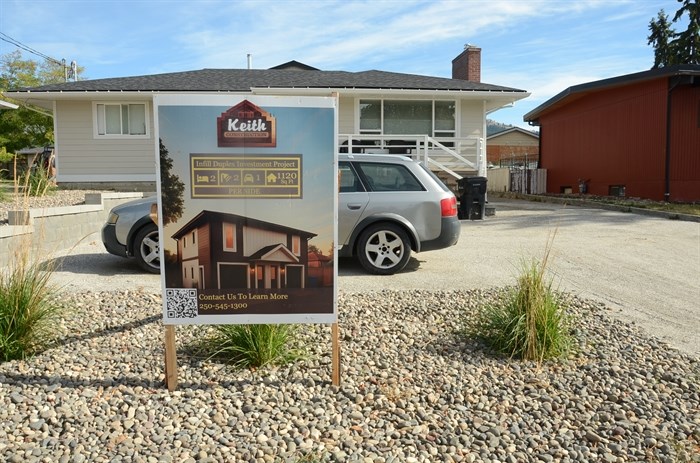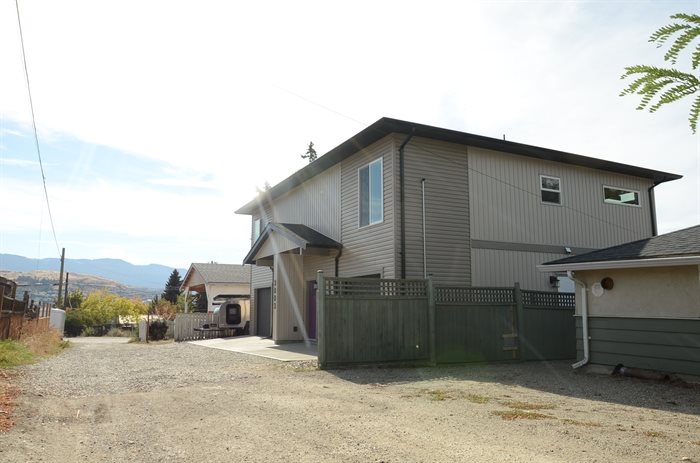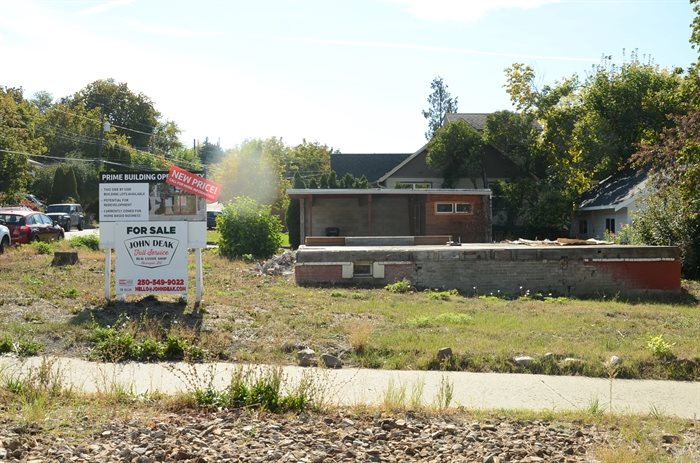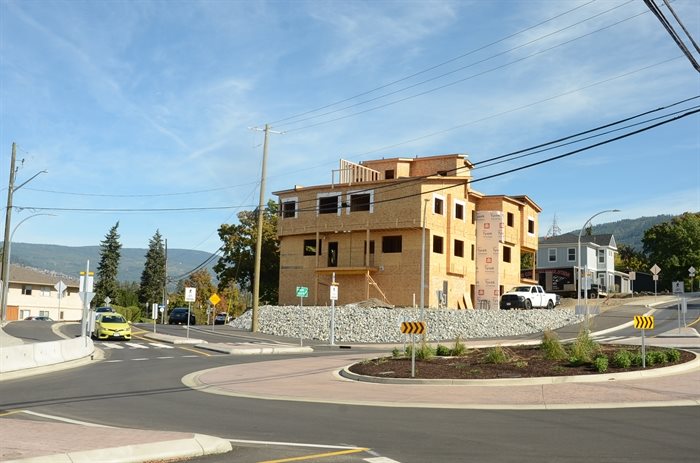'Super efficient': The impact new housing rules have had in Okanagan, Kamloops
When Vernon builder Bryce Dahlen was approached by a client late last fall to build a carriage house in their yard, he pitched the idea of a duplex.
New rules about density implemented by the provincial government had dramatically cut the red tape, allowing the builder's client to build more in their backyard without the usual headache.
Once Dahlen explained this, his client, while still in their house, decided to build a duplex in what had been their backyard.
Now, less than a year later, the two units are built, and tenants have moved in.
"It was super efficient," Dahlen told iNFOnews.ca. "This new zoning and rules will change our landscape of density within our community."
Prior to the new rules, the lot would have had to have been rezoned, which Dahlen estimates could have taken between six months and a year.
While it's only two new units in a city with a population of more than 40,000, it's a direct result of the rules coming down from the province to cities across BC.
In the fall of 2023, in an effort to alleviate the current housing crisis, the province passed Bill 44, which required all municipalities with a population of more than 5,000 people to allow for up to four units on lots that had previously been zoned for single-family homes. If the lot is near an efficient transit route, six units could be built.
While the provincial government's move technically has the potential to change the landscape of how many BC cities look, it's in its very early days of implementation.
Dahlen, who is the third-generation owner of Keith Construction, said each unit in the duplex he just built has two bedrooms, two bathrooms and a single-car garage. They rent for $2,300 each.
"The duplex costs around $700,000 to build, but when you look at the rental income that they're getting, it's a strong investment case," he said. "I don't see it changing the landscape overnight... (but) we're definitely seeing an uptick of people curious about it."
Whether the curiosity will lead to more high-density development in the future isn't yet known, but City of Vernon community planning and sustainability manager Trisa Atwood said the city hasn't seen a dramatic increase in the number of applications for duplexes, triplexes and fourplexes as a result of Bill 44.
"The current economic conditions have had an impact on housing construction related to market uncertainty, construction costs, financing and lending availability, and changing financial programs at the federal and provincial levels," Atwood said.
Since the rules changed, the City of Vernon has issued a dozen building permits that will generate 39 new units.
While it's not true to say that the 12 permits issued would have only allowed for 12 houses before Bill 44 (some may have had suites), the 39 units are an increase in what would have been ordinarily permitted without going through the rigmarole of the rezoning process.
Atwood said they are in the final phases of Council approval for the new Official Community Plan, which they anticipate will have a positive impact on housing as they streamline internal processes and build on the new zoning bylaw.
The province's move was new for most municipalities, but something the City of Kelowna had implemented as a pilot project back in 2018.
"We pre-zoned about 900 properties (for higher density) and by now, we've had probably more than a quarter of those redeveloped," City of Kelowna planning and development services director Ryan Smith told iNFOnews.ca. "It's a slow trickle of change through our residential neighbourhoods ... and we see that kind of continuing now."
Smith said even seven years later, the City still hasn't seen the full impact of the changes due to economic pressures.
Some property owners or would-be developers bought land when it was expensive, thinking prices would continue to rise, and even if construction was expensive, they'd still make money.
"That's changed quite a bit and things have cooled off so much that they're having to wait and sit before they develop," Smith said.
Since the new rules came in to play, the City of Kelowna has issued 58 permits for 266 units.
Again, it's not true to say that previously only 58 homes could have been built, but it has increased density.
Smith said Kelowna's initiative has been a success, especially when compared to some Lower Mainland communities.
He said most people don't pay attention to the implications of new rezoning rules, and they did get letters from residents questioning how their neighbours were allowed to build a fourplex.
Most of the development has taken place closer to the city centre, and in the sub-suburban single-family neighbourhoods, it's been a "very slow trickle of change," he said.
City of Kamloops planning manager Eric Beech said the city hasn't seen many applications to densify single-family lots.
"I think it's just the timing... based on economic uncertainty," he told iNFOnews.ca. "The economics of buying a property, tearing a building off of it, then building four more units on it."
He said they are seeing applications come from the North Shore, where land values are a little bit cheaper.
To date, Kamloops has received six applications, four for duplexes with suites and two for four-unit row houses. Four of these have applied for building permits, meaning they're likely to go ahead.
"If this happened maybe two years ago, when the market was hot maybe those numbers would look a lot different. It just happened at the wrong time, so I think it's just going to take time,"
he said.
While the rule change sounds like anyone with a single-family lot could demolish their home and build a fourplex, the reality is different.
Dahlen said the duplex he built worked well because the lot was 60 feet wide by 150 feet long and backed onto a laneway. A far smaller lot would make building difficult when abiding by a city's setbacks and other constraints.
Vernon realtor John Deak has two empty side-by-side lots up for sale, a stone's throw from Vernon city centre in a desirable neighbourhood. But at 50 feet by 50 feet, its development potential is quite different than a larger lot.
"We've had a lot of, let's call it opportunistic inquiries," Deak said.
The realtor said that as currently only four units could be built on the land, he thinks developers are cautious that they can't make it economically viable in this market.
"If we're allowed to go to multi-level under the new Official Community Plan changes... and maybe somebody can take that up to eight units... that changes a lot of things," Deak said.
From Dahlen's perspective, he thinks the new zoning rules will create a wealth of opportunities for more modest homes to be built.
He spends a lot of time building one- and two-million-dollar homes, which he's very grateful for.
"That doesn't really change the middle class in our community, but projects like this definitely could," he said.
— With files from Levi Landry.
To contact a reporter for this story, email Ben Bulmer or call (250) 309-5230 or email the editor. You can also submit photos, videos or news tips to the newsroom and be entered to win a monthly prize draw.
We welcome your comments and opinions on our stories but play nice. We won't censor or delete comments unless they contain off-topic statements or links, unnecessary vulgarity, false facts, spam or obviously fake profiles. If you have any concerns about what you see in comments, email the editor in the link above. SUBSCRIBE to our awesome newsletter here.







